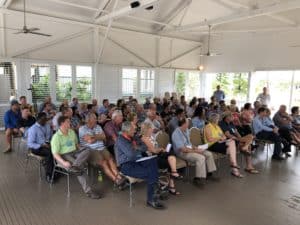View all Project Catalyst videos
Project Catalyst is a Grower Led Innovation Project in sugar cane that was formed to explore and validate farm management practice change leading to improved water quality for the Great Barrier Reef (GBR).
Funded by the Coca-Cola Foundation, the Australian Government’s Reef Trust 3, and Bayer CropScience, with support from natural resource management groups, WWF and industry partners, Project Catalyst has built a strong network of more than 100 innovators, committed to sustainable cane farming within the GBR.
With a focus on changes that have environmental as well as social and economic benefits, Project Catalyst highlights that farmers can drive significant improvements for the environment without jeopardising the viability of their farming businesses.
Support
Growers are supported throughout the trialling of new concepts by an experienced team including farm extension and agronomic solutions providers, economists, suppliers, environmental consultants, and communications specialists. Trial design and monitoring is coordinated and standardised to allow growers to assess if the trialled practice change is beneficial to their operation or how such a practice could be modified to suit their climatic, geographic or agronomic conditions.

The 116 growers, who work on 104 projects and who farm more than 35,583 ha, from Mosman to Mackay, share and evolve these practice changes through farmer to farmer engagement, without any competitive constraints.
The level of involvement and passion within Project Catalyst has resulted in the development and adoption of practice changes within sugar cane that have grower support, are practical to implement, and balance environmental, social and economic factors. Many of the practice changes have resulted in productivity improvements that have helped growers to increase their returns against industry trends.
A number of practices are improving nitrogen use efficiency including applying fertiliser rates to match the yield potential of individual blocks, use of rotational crops such as soy bean to build up soil nitrogen levels, reducing fertiliser (nitrogen inputs) for older ratoons and late harvested cane, and reducing nitrogen after mill mud applications are all practices that are reducing nitrogen surplus. The project is finding that site conditions have a major bearing on the suitability of any particular practice and that good agronomic advice is important to align practices with site conditions. Under some circumstances, reductions of nitrogen surplus of up to 30% are achievable.
Reduction
The project to date has provided growers with practice change options that have delivered an estimated reduction of more than 20kg/ha of nitrogen applied as fertiliser
Two key Project Catalyst farm practices are significant in reducing nitrogen excess:
· Reduced nitrogen application to older ratoons
· Reduced nitrogen application to reflect soil constraints
By focusing on potential crop demand for nitrogen: in a given zone within a block or farm; the age of the ratoons; or other crop tonnage constraints growers are able to minimise residual nitrogen not utilised for crop growth that enters waterways and the GBR.
Project Catalyst is seeking new growers to implement some of the following validated practices to kick start wider industry adoption:
• Reducing nutrient rates on old ratoons and late cut ratoons.
• Reducing nutrient application on soils with production constraints.
• Site specific variable rate application of nutrient and chemicals.
• Soil mapping and use of GPS to support alignment of fertiliser rates to soil types and yield potential.
• Implementing controlled traffic to improve soil health.
• Using GPS to improve farm management.
